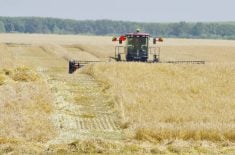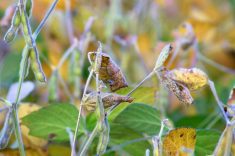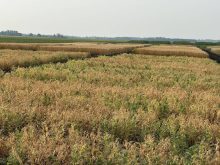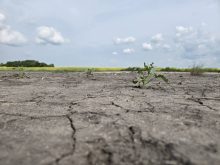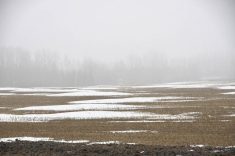Argyle farmers Alfred and Judy Billingham have been baling corn stover for years, but this year they tried a slightly different technique.
They aren’t alone.
“Some of the positives from this drought is the innovation and utilization of products,” Keystone Agricultural Producers (KAP) president Bill Campbell noted during KAP’s online advisory council meeting Oct. 20. “I know there has been harvesting of cattails and alternative feeds to get our breeding herd through (the winter). We hear about those who utilize animal nutrients on their landscape and all of those things that innovate, that’s how we adapt. There’s one thing about it, if the ag industry has issues and concerns it knows how to adapt.”
Read Also

Manitoba boosts stake in cereals centre to $23.5 million
Premier Wab Kinew said the additional project funds will help ‘Trump-proof’ the provincial economy.
Why it matters: This year’s drought left many Manitoba cattle producers with a shortage of feed driving them to seek affordable alternatives.
The Billinghams have grown grain for about 20 years and have baled the stover for almost as many.
“The bales from a normal crop pay for the seed,” Alfred Billingham said in an interview Oct. 27.
When Judy Billingham first started baling corn stover it was intended for bedding, but she found the cows preferred eating it.
The cows liked it even better when the bales were chopped in a bale shredder, even consuming most of the stalks after they were cut in smaller pieces.
“She observed that we were getting more feed value out of stuff being chopped up,” Alfred said.
Until this year Billingham would cut the corn low with his all-crop header and drop the corn stover in a swath behind the combine and his wife Judy would follow with the baler.
But this year Alfred kept the straw chopper on the combine surrounded by an old binder canvas to keep the stover in a swath for baling. That way the longer main cornstalks were cut into six-inch pieces.
“It was working good,” Alfred said. “We really didn’t have any issues. I learned in the past to cut as low to the ground as you can get away with because if you don’t you take out your pickup because cornstalks that are an inch in diameter are really tough on the pickup of a baler.”
He also switched to a draper header.
“The all-crop head, if you’ve ever been under one, it’s a nightmare of gears, bearings, et cetera and choppers that cut the stalk off,” Alfred said. “With all the green mash (volunteer canola) knee-high in the bottom of the corn the choppers were being overwhelmed by the massive vegetation.”
Corn stover bales made in fall usually store well until it gets warmer in the spring when they start to spoil, Alfred said.
He also advises those baling corn stover on stony land to be careful when shredding and spreading. Golf ball- to softball-sized rocks can get rolled and later shot out during bale shredding.
Cattails aren’t normally on the menu for beef cows, but when feed is short farmers look for options. Some farmers did cut cattails when they were green hoping they might supplement other feedstocks this winter, KAP’s Bill Campbell said in an interview Oct. 20.
“I’m not sure of the nutrient value (of cattails) or TDN (total digestible nutrients),” he said. “You could drive in the slough. It was green. We’ll see what happens when winter comes and the cows are hungry.”
When cattails are harvested young, they have a slightly higher value than cereal straw with about six per cent protein and 50 per cent TDN, Manitoba Agriculture and Resource Development’s website says.
“Mature cattails have no feed value,” the site says. “Although feed tests show bulrushes are similar to cattails in terms of protein and TDN, bulrushes are very fibrous and are not consumed readily by cattle.”
A few years ago the Billinghams saw their own cows eat baled cattails. They were baled to shelter the herd, Alfred said.
“Two weeks later we had holes in the shelter,” he said. “They had eaten the bottom bales out in places.”
Alfred said another farmer told him there was a ‘fine grass’ with the cattails that cows like to eat.
“It’s amazing what they’ll eat when they’re hungry,” he said.
“The rumen can digest a lot of different kinds of cellulose.”





